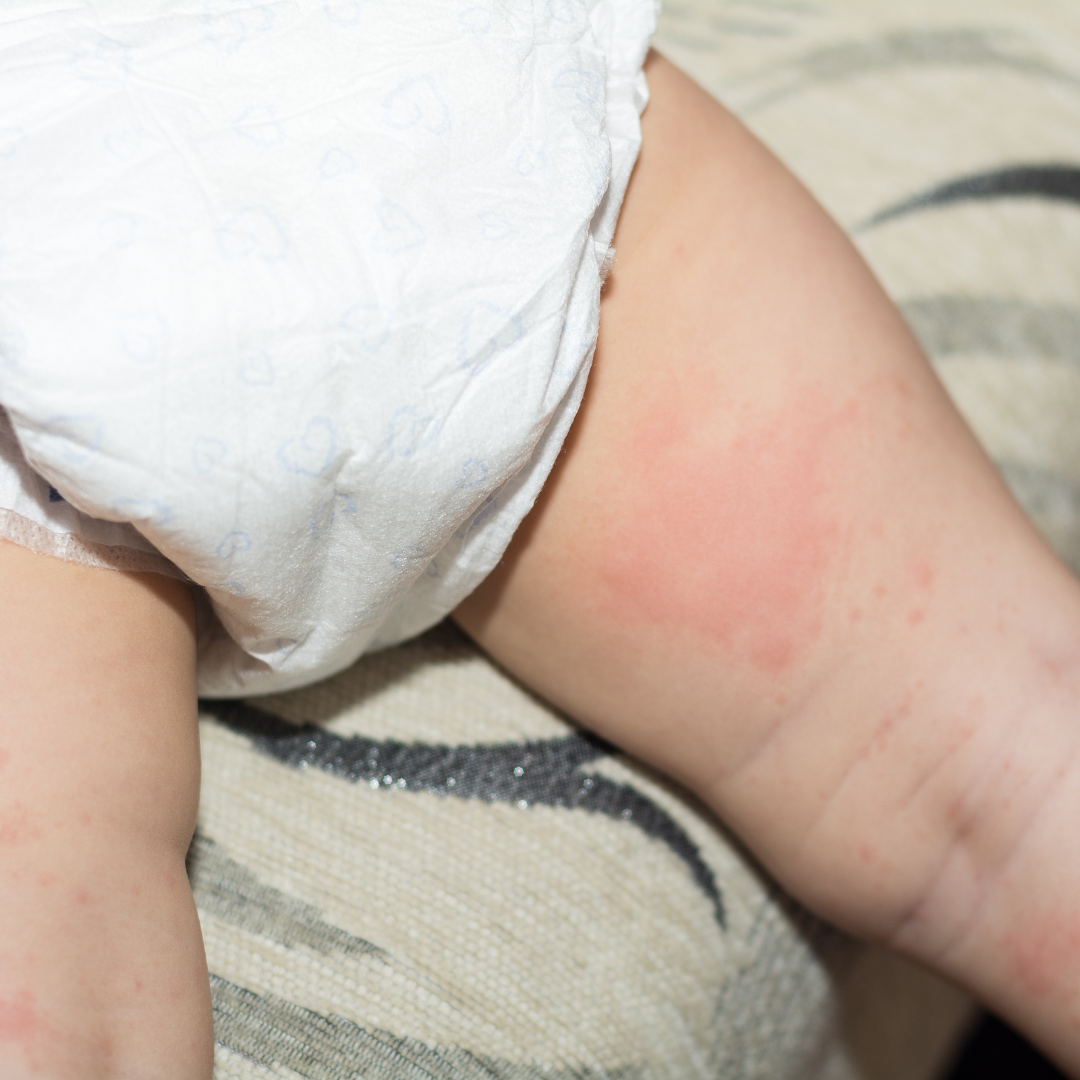Diaper Rash: Treat with Greer’s Goo
Diaper rash is a common skin condition affecting babies' bottoms, and it can also occur in adults who wear diapers. More than half of all babies will experience diaper rash, particularly between 4 and 15 months, although it can appear at any age from birth to 3 years.
Diaper rash can happen for several reasons:
Prolonged exposure to a wet or dirty diaper
Friction from the diaper rubbing against the skin
Yeast or bacterial infections
Allergic reactions to diapers, soaps, detergents, or wipes
Diaper Rash vs. Yeast Infection
While a diaper rash and a yeast infection can both occur in the diaper area, they have distinct appearances. Diaper rash usually presents as a large red patch on the baby's bottom, while a yeast infection appears as small spots in the skin folds around the groin, legs, and genitals. Diaper rash typically clears up with a standard diaper cream, whereas a yeast infection requires an antifungal cream and may take a few weeks to resolve.
Types of Diaper Rash
There are several types of diaper rash, including:
Yeast Diaper Rash: Caused by a fungal overgrowth, characterized by red or pink patches with sharp edges and possibly tiny pimples or bumps.
Irritant Dermatitis: The most common type, caused by irritation from urine and poop, resulting in pink or red patches on areas covered by the diaper.
Bacterial Diaper Rash: Known as impetigo, caused by staph or strep bacteria, with symptoms including bright red skin around the anus or crusty yellow pimples.
Allergic Diaper Rash: Rare, caused by allergens in soaps, detergents, wipes, or diapers, resulting in a red rash at the contact site.
Causes & Symptoms of Diaper Rash
The primary cause of diaper rash is prolonged exposure to a dirty diaper. Other causes include:
Heat rash from hot weather or overdressing
Food sensitivities causing hives or wheezing
Diarrhea, sleeping in soiled diapers, or starting solid foods
Antibiotic use by the baby or the nursing mother
Typical symptoms include:
Red, irritated skin in the buttocks or genital areas
Itchy skin or sores in the diaper area
Unusual fussiness and crying during diaper changes
If the rash is bleeding, has crusty sores, or if blisters or pus appear, contact your pediatrician immediately.
Treatments for Diaper Rash
With proper treatment, a diaper rash should improve within three days. If it persists, your baby might have a yeast infection, and you should consult your doctor. The best way to treat diaper rash is to keep the baby's skin clean and dry:
Rinse the diaper area with warm water and pat it dry.
Use soap only if necessary.
Let the baby's bottom air-dry when possible.
Apply a diaper cream or ointment.
Diaper Rash Creams and Ointments
Diaper creams and ointments form a barrier to protect the skin. Creams, often containing zinc oxide, spread easily and aid in healing. Ointments, such as those containing petroleum jelly, provide a stronger barrier but limit airflow to the skin.
Prescription Treatments
If home care is insufficient, your pediatrician may prescribe:
Antifungal cream for fungal infections
Topical or oral antibiotics for bacterial infections
Mild steroid cream to help heal the skin
Home Remedies for Diaper Rash
Some home remedies can be effective but always consult your pediatrician first. Options include:
Breast Milk: Safe and potentially effective, though results vary.
Coconut Oil: A gentle moisturizer, but not proven to clear up rashes.
Witch Hazel: An ointment with witch hazel might help, but avoid applying it directly to the skin.
Complications and Prevention
Possible complications include changes in skin color and infection. Prevent diaper rash by:
Washing hands before and after diaper changes
Changing diapers frequently
Use mild cleansers and ensure the area is dry before applying a fresh diaper
Using mild, fragrance-free wipes or a clean, soft washcloth
Consult your doctor if the rash worsens, doesn’t improve in 2-3 days, or if your baby has a fever or signs of infection.
Try Greer’s Goo
If you're struggling with your baby's diaper rash and looking for an effective solution, consider Greer’s Goo. Preston’s Compounding Pharmacy compounds Greer’s Goo, a topical cream specifically designed to treat diaper rash and other skin irritations. Greer’s Goo acts as a moisture-lock barrier on the skin, providing relief and promoting healing.
Greer’s Goo at Preston’s Pharmacy
Customized Formulation: We create Greer’s Goo tailored to your baby’s needs, ensuring the best possible care.
Expert Advice: Our pharmacists are available to answer any questions and provide guidance on the best treatment options.
Convenient Ordering: Call us at (571) 341-8787 to order Greer’s Goo or any other compounded medications you need.
Let Preston’s Compounding Pharmacy help you provide the best care for your baby’s skin.


